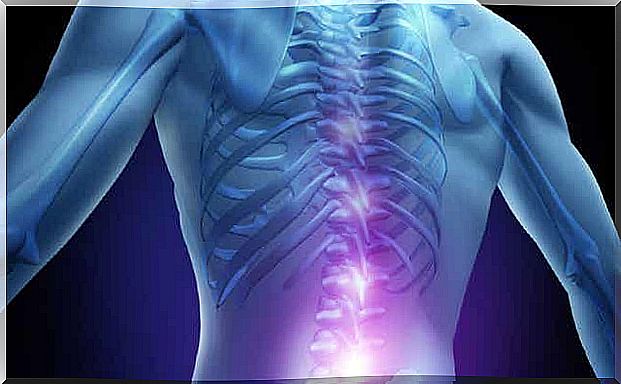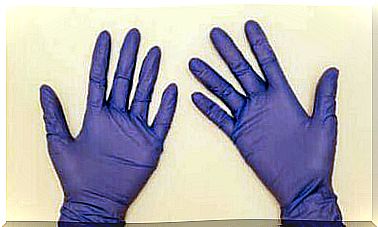Transverse Myelitis: Symptoms, Causes And Treatments

Transverse myelitis is an inflammation of the spinal cord segment. Inflammation can have different causes and can have very different symptoms.
Here we tell you everything you need to know about this medical disorder.
What is transverse myelitis?
Transverse myelitis is an inflammation of the transverse segment of the spinal cord. The inflammatory process causes the destruction of the myelin sheath, which is the layer that covers the neurons in this area. This interrupts nerve conduction, the consequences of which we will discuss later in the article.
Transverse myelitis is a relatively common disease that affects thousands of people around the world. Transverse myelitis causes many of them permanent problems that affect their daily lives. Others recover without sequelae. Transverse myelitis can be acute, developing over hours or days. It can also be chronic if it develops over the weeks.
What are the causes of transverse myelitis?
Medicine does not yet know the reasons for the development of transverse myelitis. However, it is believed to be due to an abnormal response of the immune system that attacks the spinal tissue.
This immune response is associated with other pathologies that may act as triggers. Some diseases that can trigger a disproportionate immune response include:
- Multiple sclerosis: This is the disease most closely associated with transverse myelitis.
- Optical neuromyelitis.
- Diseases produced by some viruses and bacteria, such as tuberculosis, Lyme disease, or smallpox.
- Various vasculitis.
- Certain medicines and vaccines.

Symptoms caused by transverse myelitis
As mentioned above, symptoms may appear acutely or progressively over several days. Normally, transverse myelitis begins with severe back pain and a feeling of tightness in that area of the spine.
After this pain, the person begins to notice tingling in the legs as well as numbness. There may also be increased sensitivity to touch and heat in some areas. A person may also experience a recurring need to go to the bathroom.
As the condition progresses, these symptoms worsen. This can result in paralysis, loss of sensation, urinary retention, and loss of bladder and bowel control. Both the severity and duration of the symptoms and the degree of disability it causes depend on the degree of inflammation in the area in question.
Diagnosis of transverse myelitis
The diagnosis is based on an expert’s physical examination. Although the symptoms may indicate this disease, the doctor must distinguish it from some other diseases that can cause similar symptoms. To ensure a correct diagnosis, your doctor will often perform many different tests.
Complementary tests may include imaging, such as magnetic resonance imaging, or analytical tests, such as lumbar puncture. Once the result is confirmed, treatment is started as soon as possible to minimize the consequences.
Treatment of transverse myelitis

The form of treatment depends on the relationship between myelitis and the underlying disease. It is often the case that priority is given to the treatment of the underlying disease. For example, if myelitis is caused by tuberculosis, the treatment given by a specialist is for tuberculosis.
In addition, or if no clear cause for transverse myelitis has been found, it can be treated with corticosteroids. Another option may be plasmapheresis, which involves taking a significant amount of blood from an infected person, removing antibodies that attack myelin, and re-injecting them without them.
As always, the doctor in charge of the case will decide what is the most appropriate treatment in each case.
A long-term illness that can have long-term consequences
The prognosis of the disease depends on many factors. Restoration of muscle activity and sensitivity usually begins 2 to 12 weeks after the onset of symptoms.
Recovery can be slow and take years. On the other hand, if no improvement occurs within the first 6 months, the patient may never return to normal functioning.
One-third of those affected recover completely, another-third have more or less serious consequences, and another-third do not recover at all. As always, it is important to remember that when symptoms occur, you should consult an expert. The doctor is the best person to assess the situation and determine the necessary measures.









